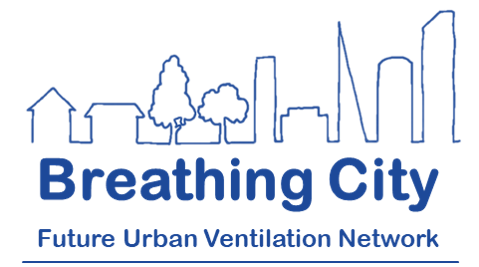On 12 May 2023, the Future Urban Ventilation Network (FUVN) and the Tackling Air Pollution At School Network (TAPAS) held an online facilitated workshop (hosted by The Collective) with key stakeholders to discuss the viability of a UK Indoor Air Quality Observatory. Key stakeholders were invited from across public policy, academia, funding bodies, and professional institutions. The workshop followed on from previous meetings, which took place in Paris, April 2022, and London, October 2022.
Background
It is well recognised that air quality has a substantial impact on human health. The ability to relate outdoor air quality data to health outcomes has been achieved through the significant investment in a national (and indeed worldwide) network of air quality sensors combined with models and analysis to evaluate spatial and temporal variation in air quality.
However, people spend around 90% of their time indoors, so the majority of air breathed is inside homes and public buildings and transport vehicles. As more attention is being focused to conserve energy under Net Zero, new buildings are being “sealed” having an impact on ventilation and chemical pollutants, biological agents that may accumulate indoors, as well as on physical parameters such as temperature and humidity.
There is also a growing awareness of the importance of indoor air quality and the wider indoor environment for health, with exposure to contaminants occurring within the built environment, from both indoor and outdoor sources. The COVID-19 pandemic has highlighted the importance of indoor environments for transmission of disease, and numerous studies show that indoor air quality impacts on physical and mental health, as well as productivity, performance, decision making and creativity.
Proposed initiative
The establishment of an observatory for indoor air quality would coordinate the assessment of the impacts of the indoor environment on health. Its function would be to oversee indoor air monitoring activities and provide evidence for policy makers. It should involve government agencies, academics and consultants, develop guidance and protocols for monitoring indoor environments, provide a central repository for data storage, prioritise indoor air pollutants based on exposure and health effects, and provide training by developing policy briefs and information leaflets.
The observatory would enable future research characterising indoor sources, the differential toxicity of pollutants present in indoor air and people’s exposure to them, which will enable quantification of the burden of disease associated with a range of hazards in indoor environments. Data from the observatory would also support better understanding of building performance and therefore contribute towards policy goals such as progress towards net zero.
Workshop Attendees
The facilitated workshop invited representatives from the following stakeholders:
Government departments and agencies: Met office; Department for Transport; Scottish Government; Ministry of Justice; Department for Digital, Culture, Media and Sport; Department for Education; Health and Safety Executive; Office for Health Improvement & Disparities, Department of Health and Social Care; UK Health Security Agency; Department for Environment; Food and Rural Affairs;
Funding bodies: UK Research and Innovation, Engineering and Physical Sciences Research Council
Professional bodies: Royal Academy of Engineering; Institute of Air Quality Management; UK Indoor Environments Group; Institute of Occupational Medicine
Clean Air Champions: University of Southampton, Imperial College London, University of Birmingham
Clean Air Networks and their correlating academic institutions: HEICCAM – University of Edinburgh; TAPAS – University of Cambridge; TRANSITION – University of Birmingham; CleanAir4V – University of Birmingham; FUVN – University of Leeds; BioAirNet – University of Essex; National Physical Laboratory
Further academic representation: University of Strathclyde, Imperial College London, University of Loughborough, University College London, University of York, Environmental Research Group Imperial College London, Oxford Brookes University
Key points
Several key points were raised throughout the day of what a UK indoor air quality observatory would need to address:
- There is a need for something at large scale that has a degree of permanence going beyond a normal research study. A possible time frame of at least 10 years was suggested and would need to be planned in from the start.
- Needs to be driven by the questions that need answering with data. The observatory has to facilitate actions, rather than data for data sake.
- Primary areas of use are around health, climate/energy and building performance, and there may be opportunities to leverage other policy priorities.
- Needs to support testing of interventions and/or solutions, both technical and behavioural. This may include from the private sector.
- The observatory will benefit everyone, but there should be a focus on inequalities, with disadvantaged groups getting the greatest societal impacts.
- Co-production is an essential component of an observatory including the design as well as its operation – it may be appropriate to include a citizen-science aspect.
- Collected data should inform both the public & organisations where monitoring is being undertaken, and policy makers.
Next steps
There is a need to develop and understand a number of key aspects to initiate an indoor air quality observatory. A project team could be brought together to address some key questions in the first instance which could consist of academics, consultants, or a combination of both:
- Comprehensive stakeholder mapping – who would have an interest in an indoor air quality observatory, what would they want from it, how would they engage with it?
- Measured parameters – What parameters would be measured and how? Which would be part of a core data set, and which could be enhanced measurements in a smaller number of locations? What contextual/meta data is needed with indoor air / environmental quality measurements?
- Data quality – how good does measurement need to be, and what confidence is there in different measurement approaches? Is a different approach needed for regulatory compared to research/indicative values?
- Existing data – there needs to be systematic collation of past projects that have measured indoor air quality in UK buildings. Focus on studies that have carried out longitudinal measurements in several settings including indoor air quality and personal sampling.
- Location – What locations and data collection would lead to the greatest impact and how does this vary for different stakeholders?
- Data integration – How can indoor air quality data be integrated with other data sets (e.g., health data, emissions data, housing condition survey, ONS (Official for National Statistics) data etc) and what considerations would need to be taken in setting up an indoor air quality observatory to facilitate this integration?
- Data analysis & visualisation – What is the best way to analyse/visualise indoor air quality data and provide feedback to different stakeholders? How can the observatory be used to raise awareness and support education in indoor air / environmental quality as well as inform policy?
- Citizen science – Is there an opportunity to implement citizen science in an indoor air quality observatory – what role could it play, how could it be developed?
- Legal rights around indoor air quality data – what can/can’t be collected, who can use the data, privacy particularly in domestic settings, role of industry in data collection/data management?
The team are now working to develop the Indoor Air Quality Observatory vision by disseminating the findings above, connecting with other stakeholder groups, and exploring funding opportunities. If you would like to get involved with any of these activities, please email us at contact@breathingcity.org


